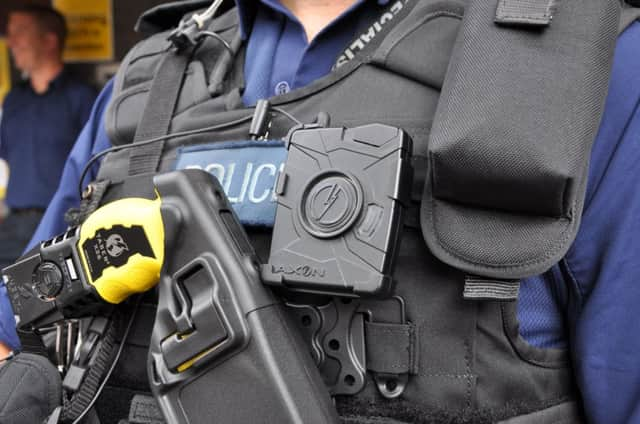Smile, you’re on official cameras


Thirty years ago it was 1984, and the notion that you couldn’t walk down any street in any city centre in the UK without some form of CCTV or surveillance recording your every move would have sounded like Orwellian fiction. Although this is only an urban myth, it encompasses more truth than most of us would perhaps like. In the wake of the Snowden revelations and recent reports of Government Communications Headquarters having access to bulk communications materials and privileged legal documents without warrant, the use of body worn cameras for surveillance purposes is a divisive prospect, adding to the already heated “privacy v security” debate.
The traditional argument for CCTV is that it helps detect and deter crime but its practicality is limited. Footage isn’t exactly HD quality and it can’t be used to record domestic or other crimes which occur within private residences. This is perhaps why police forces throughout the UK are beginning to trial the use of body worn cameras as an addition to, not a replacement for, existing CCTV systems.
Advertisement
Hide AdAdvertisement
Hide AdBody worn cameras are essentially tiny cameras mounted to the front of a standard police uniform, which can be used to record audio and visual footage of anything the officer witnesses on duty – including visits inside private homes – justified, perhaps, because of the need to evidence crime in a way which can be carefully controlled by the police.
If body worn cameras are the only way an officer can gather critical, conclusive evidence to avoid a “he said, she said” scenario, then surely they should be able to use such devices all the time? Unfortunately, the solution isn’t that simple.
The use of body worn cameras throws up a number of privacy issues, such as: whether it is appropriate to record everything or whether recording should be limited to, for example, criminal acts, interviews and arrests; whether members of the public should be made aware when they may be recorded; how the footage can be securely stored once it has been recorded; and how long footage should be kept before it is deleted.
Such issues will have no doubt been carefully considered by police forces before implementing the use of body worn cameras.
It’s also easy to see how the use of these cameras could spread outside of the police sphere, to security guards, bank staff, bar and restaurant staff, retail assistants… essentially anyone with a public-facing job. Some airports have, or are considering, equipping customer service staff members with Google Glass. The premise is that Google Glass enables staff to answer queries or translate languages at “the blink of an eye”. But it’s difficult to ignore the fact that Google Glass could also potentially be used by staff to record footage of passengers in a more discreet way than if, for example, they were equipped with tablets instead.
Legally, there is an issue as to when the legitimate use of body worn cameras should take precedence over privacy rights. The Information Commissioner’s Office (ICO) – the body responsible for enforcing data protection in the UK – has recently updated its code of practice on CCTV to include guidelines on the use of body worn cameras and other surveillance technologies such as drones and number plate recognition devices. The main principles are: don’t record people unless you absolutely have to, let them know if you are recording them, and delete footage once you no longer need it.
The most significant of these for body worn cameras is that individuals should be notified if they are being recorded, suggesting that the cameras should be accompanied by a clear sign or notice (“Smile, you’re on camera”). It will be interesting to see how this is implemented – it is also required for CCTV but clear and obvious CCTV warning signs are, in daily life, a rarity. Following the release of the new ICO code of practice, organisations should now be thinking even more carefully about using body worn cameras for surveillance purposes. Going forward, best practice will be for organisations to take a proactive approach to ensuring privacy is sufficiently protected before using body worn cameras on a wide-scale basis.
Carrying out a full, documented analysis of privacy risks is a must, as are clear and prominent notices about what, and who, may be recorded. As a member of the public, you have the right to expect that you will always be made aware if you are being recorded.
• Joanne Snedden is a solicitor (commercial) with Burness Paull